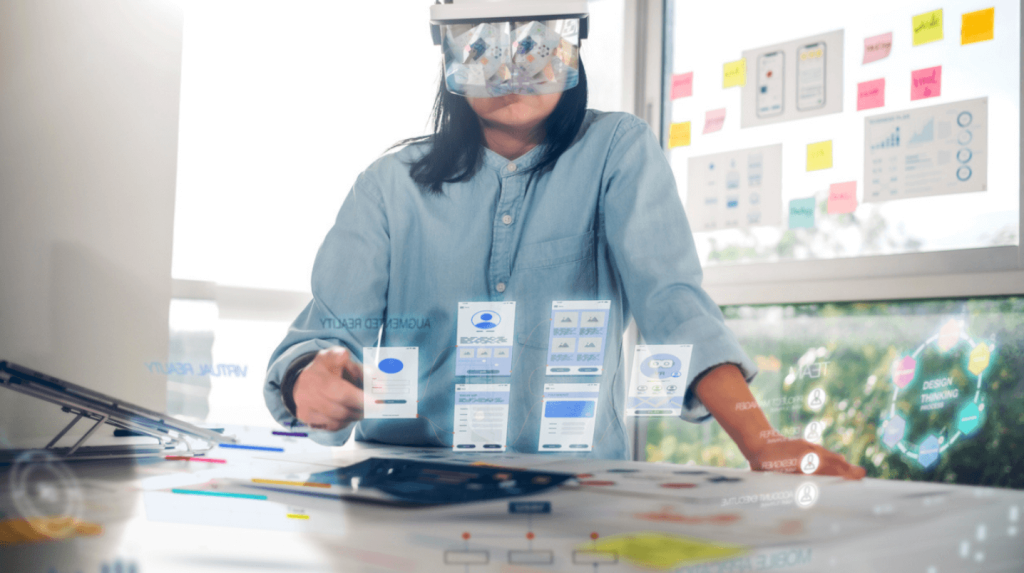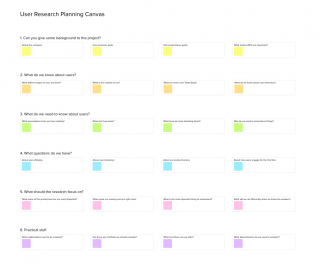
Many articles about the future of UX tend to get caught up in design trends. But the reality is, the future of UX isn’t something that distant or transient. You and I are shaping it each day through how we influence our organisations and how we deliver our work. Nielsen Norman Group estimate that there will be 100 million UX professionals by 2050. As more and more UXers join us, we will become the ones who shape the future of our profession.
I’ve been asked to attend a panel discussion on the future of UX so to make sure I have something to contribute, I’ve been doing some research and thinking about where UX is heading. Here’s my best bet for what we’ll be facing any day now.
A change of focus for UX
Product teams will see some interesting changes. I believe we’ll see more companies escaping the ‘build trap’ and delivering features that make a positive and lasting impact on the lives of users. Technology will probably still drive these changes, but the best product teams will shape the technology to enable users to solve unmet human needs.
Artificial Intelligence will drive much of this change. But rather than put us all out of jobs, I believe AI will shift our focus to designing enhanced interactions with technology. The role of the human will become less of an actor and more of an overseer; a shift in focus for the human to interpreting data and managing automated actions. Our UX efforts will be focused on designing intelligent and easy-to-understand dashboards that convey meaning at a glance, facilitate the exploration of anomalies with ease, and allow people to initiate new instructions efficiently.
As AI becomes more context-aware it will be more able to help us in our daily lives. Rather than trawling through files and folders to find information relevant to a task, AI will notice the context we are in and offer a small selection of supporting information it determines to be relevant. Our relationship will shift with tech to one where the promise of Siri, or even Clippy in days gone by can be realised. We’ll focus more on empowering users to be more efficient and effective, rather than the user having to plan and initiate an interaction with tech doing what it is told. When this enhanced technology is mainstream we’ll finally see the Zero UI movement realised as we break away from being positioned behind a workstation and will be free to interact with a minimal interface.
The enhancement in intelligence and data processing will also allow us to benefit from more advanced personalisation. The most common examples of personalisation we see at the moment are superficial, such as a customer’s purchase history being used to recommend other products they may like. As the technology develops, we will see personalisation that changes the user journey dynamically based on factors such as user aptitude, attitude, and the context they are in. A journey might be very different for a user in their first few months of setting up an account where they are unfamiliar with the service and only have a couple of interactions, compared with someone who’s a long-standing member with several preferences and previous interactions logged. The first user is likely to have to enter more personal data and interact with more supporting information, whereas the second user is likely to be able to skip major chunks of the journey and only interact when new data is needed or a change in action is requested.
No article talking about the future would be complete without a mention of the Metaverse and extended reality. Undoubtedly, our online communication methods at work, and in our personal lives will change. However, the area of most focus is likely to be less upon fully immersive Metaverse experiences, and more upon using augmented reality to enhance our day-to-day experiences. Adding a layer of context-aware information to our interactions in the real world will require some creative design solutions.
An evolution of our UX approach
We’ve looked at different areas of focus for our UX work in the future. How about the different ways we might go about our work?
I believe inclusivity in the way we research and design will be a major focus. In fact, it is already a critical component for many teams. Not only is it ethically and morally right to ensure we don’t exclude anyone from using our products and services, but it also makes business sense to reach a wider audience, create positive sentiment among customers, and even avoid litigation or regulatory issues. Design teams will need to adapt their thinking, challenge biases, recruit diverse teams, and ensure research participants are representative of a broad range of abilities, backgrounds, and access needs.
Alongside being more inclusive, I believe we will also see much more emphasis on ethics and harm prevention. Enhanced awareness of the unintended consequences of our designs is critical, and teams will no longer be able to claim ignorance as we build in more predictive ways of exploring this in our process. Using anti-personas, provocatypes, red teams, and a human factors method called Hazops are likely to become more prevalent in our work, enabling us to accurately predict and mitigate malicious acts or potential vulnerabilities in our design work.
UX teams will become fully integrated with customer experience teams in order to adopt a wider strategic view of customer interactions and assess how users are served by all departments. We will need to become more collaborative, more familiar with business goals, and take a broader view of the impact of their work. UX has huge potential to contribute to the overall business goals and should start lifting its head up from specific features to the entire emotional relationship a customer has with a business.
As data becomes more integrated into business decision making, UX teams will have no choice but to prove their value and impact, using quantitative and qualitative data. Mixed-methods are already practised among many UX teams, and I believe we will see more separations in job roles, with specialist qualitative and quantitative UX researchers within a team. In addition, we will also utilise more interesting data through biometrics, smartwatches, brain imaging, and facial coding which will only elevate the quality and output of our work. As a community, I believe this shift will drive us to align our work with business goals and therefore raise the profile and impact UX work has on the bottom line, which can only be a good thing.
The future of UX starts today, with you
One thing for sure is that we really have no idea what the future holds. We can make educated guesses as I have attempted here, but anything can happen. So, I will leave you with this Abraham Lincoln quote “The most reliable way to predict your future is to create it”. With that in mind, I hope you find something useful in this article to take back to your teams today.
—
Join me and my colleagues at UX360 this week where we’ll be talking about Inclusive UX and where the future of UX is headed. https://www.ux360summit.com/




